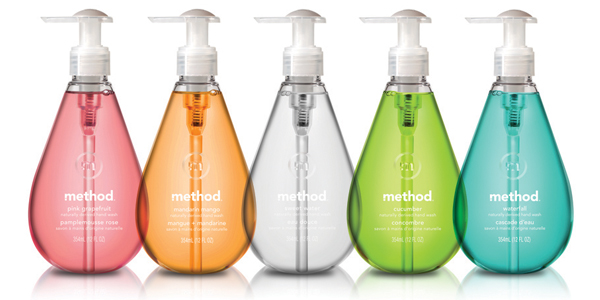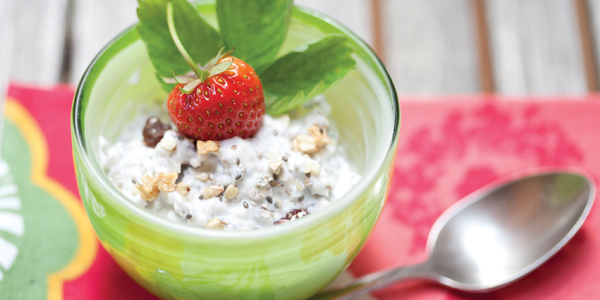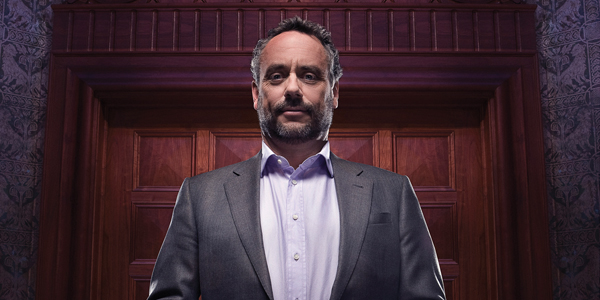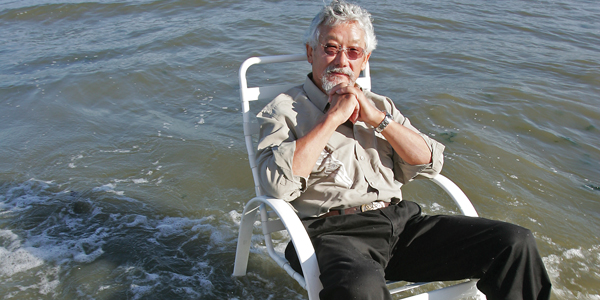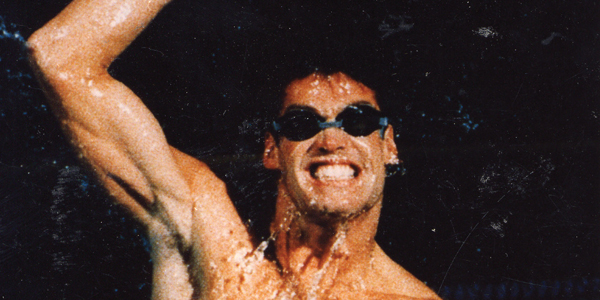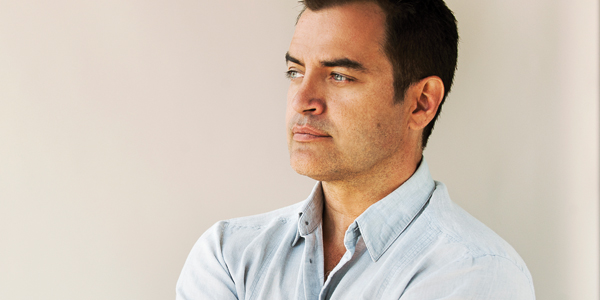Never in my life did I expect to be a soap maker. I don’t particularly love (or even enjoy) cleaning and I probably received a courtesy pass in my high school chemistry class. I’m not the smartest, most creative or the best looking person you will meet. In fact, I probably don’t have any stand out qualities that would make you scream, “Wow, he’s got talent.” What I do have is an unbridled motivation to create and inspire change.
As far back as I can remember I aspired to be an entrepreneur. By third grade, I was actively pursuing start-ups. Some of my favorites include creating custom buttons, selling hockey nets and trying to turn around our school store in sixth grade with the most powerful merchandising statement I could think of at the time – fruit roll-ups. This continued throughout my education. And much to my teachers’ chagrin, I was always more focused on entrepreneurial endeavors rather than my academic pursuits. One of my fondest memories is the time I tried negotiating with my professor of Business Finance, explaining that I was too busy trying to generate financing for the purchase of a multi-million dollar company to complete my actual assignments. He wasn’t impressed. I got an F. Luckily this didn’t deter me.
After college, I started my career at an advertising agency in London. My first job was as a strategic planner, a function designed to replace research. In marketing, research was traditionally used in a historical context to understand what was or had been. Planning was about using consumer insight to look forward and anticipate market change to help brands stay ahead. I instantly felt it was the perfect perch to identify a business opportunity that I would someday pursue. For the next five years, I continued my career in advertising in Minneapolis and San Francisco. I loved the energy and culture of ad agencies. The highly social nature of the business not only aided creativity, but also cultivated strong friendships. It certainly made the transition from college to working life seamless and later served as my reference point for how I wanted my own company to operate.
The idea for method began while I was working on a client project that required me to spend quite a bit of time in the grocery store. I started looking at the cleaning aisle because it was so big, yet felt like a sea of sameness. The brands were like relics of the 1950s, with similar packaging and parity product propositions. That was my clue to “dig here.” Most entrepreneur stories start with some eureka moment, an idea delivered on a lightning bolt that inspires them to bring it to life. Not method. This was a well-established product category that people were already using everyday that I knew could be better – or as I like to say, disrupted.
As I took on the challenge of disrupting the colossal home cleaning category, I was convinced there had to be a cultural shift that the current competitors had missed. The first seemed obvious to me. The “lifestyling” of the home was a major cultural shift that no one seemed to be thinking about. People have an emotional connection to where they live and were beginning to regard their homes as a place for self-expression. It suddenly occurred to me, why shouldn’t cleaners be beautiful enough to be left sitting on the counter, not to mention leave your home smelling nicer than fake pine?
What I lacked in enthusiasm for cleaning, I made up for with my passion for design. I had a feeling I was onto something big.
Flash-forward a couple of months: I’m back home for the holidays and driving up to Northern Michigan with my friend and future business partner, Adam Lowry. Adam was a childhood friend who had randomly become my roommate in San Francisco years later. And I know as a 26-year old it’s not very cool to tell your friends you want to start a cleaning products company, but since Adam was a close friend who I thought was least likely to laugh at me (and we were running out of things to talk about that early in the morning), I shared my plan to bring lifestyle to this uninspiring category. To which Adam quickly remarked, “You know I have a degree in chemical engineering from Stanford, right?” At that moment the partnership was cemented and we arrived more excited to work on the new company than go skiing.
With Adam’s expertise, we quickly realized a second major cultural shift had been missed: a rising emphasis on health and wellness and sustainability. He revealed to me how dirty the cleaning business really was. It was shocking to think that we pollute when we clean and use toxic chemicals to make our homes healthy. We couldn’t imagine creating a business that left a legacy of harm. We decided we were going to make non-toxic cleaners that looked and smelled nice and turned the chore of cleaning into a bit of fun. Consequently, the mission of method’s People Against Dirty was born.
But there were a couple of problems with our plan – besides having no experience or funding. First, eco cleaners were a niche category and most people deeply believed that “green doesn’t clean.” The only way we would be successful was if we could convince consumers who had never used a green cleaner to switch from their legacy choices. Sounds simple enough, right? (Cue sarcasm.) Our goal was to use design and fragrance to coax customers into trying our products, and then deliver the one-two punch of highly effective green cleaning. We hoped that would be enough to start a chain reaction of positive word-of-mouth.
To test our theory and land the elusive “proof of concept,” we created the first line of products with the help of our roommates. I still laugh out loud at the image of a group of guys making cleaning products in a very dirty flat. In fact, some of our first formulas were mixed in beer pitchers, with the original labels featuring Adam with props purchased at Home Depot – and then promptly returned to save money. Needless to say, it’s not exactly the Martha Stewart story.
Setting out door-to-door, we hit every independent grocery store, desperately trying to convince grumpy store managers at 6am to carry our products. To our amazement, one of them said “yes”. I’m still convinced that he only agreed because he could tell we would just keep coming back until he gave us a chance.
Each week we would return to the store to see what had sold and replenish the shelves. There was no greater rush than returning to the store a few days later to see that bottles were sold. People actually bought our product! We were ecstatic. Over the next few months we expanded distribution to about 30 stores and used this to gain confidence to ask friends and family for funding to help launch the business.
You quickly realize why these are called angel investors. Not only do they save you from death, but they’re the only ones who believe in you enough to put their money wheretheir mouth is. It also put incredible pressure on us to be successful because as much as we didn’t want to let ourselves down, we didn’t want to let our families down even more.
Over the next several months we quickly grew our distribution, trying to use momentum to overcome the skeptics who couldn’t quite believe that two young guys could actually take on the goliaths of the soap world. We threw everything we had into our business and it suddenly started taking off with several major grocery stores agreeing to sell our little bottles of goodness. But there was a dark side to the fast growth. We were burning through capital fast and had to start loading up our personal credit cards to keep shipping product. Plus, while running the business we also had another full-time job: trying to raise capital to fund this growth. By late August 2001, we were fortunate enough to have found an investor who was willing to take a leap of faith. And the timing could not have been better, with 16 dollars left in the bank and well over 100,000 dollars on our credit cards. We were scheduled to sign a term sheet cementing the deal on September 11th, but we woke up that morning to find the world had changed and no sane investor would complete a deal as our country fell into sadness and uncertainty. I was convinced that everything was lost, but through sheer willpower (and securing another credit card to max out) we kept the business going until we finally closed our funding in late November.
Our business success has been characterized by a similar pattern of overcoming insurmountable challenges with a combination of willpower and a heavy dose of luck. Over the next several years the business grew leaps and bounds and along the way even hit number seven on the Inc. 500 rankings of fastest growing companies.
We didn’t realize it at the time, but we were the first to create an eco-chic offering by combining high design and deep sustainability in a single product. While it may have looked very strategic in a PowerPoint deck, in reality it was the combination of my passion for design and Adam’s for sustainability that drove our business idea.
If it wasn’t for our friendship, I doubt either one of us would have been smart enough to create a business around this unique position.
We recently celebrated our 10th anniversary at method, and both Adam and I realized that the reward has truly been the journey, not the destination. We didn’t set out to just start a business, but to start a cause – a mission to rid our homes and the planet of toxic chemicals. We would never have guessed back in 2001 how much personal passion and motivation we would garner from building a company with a strong social mission.
As human beings, being a part of something bigger than ourselves is a core ingredient to true happiness.
With method, that’s what we set out to create. We’re not just making soap, but trying to make the world a cleaner and healthier place. It’s what inspires us to get out of bed every morning. We’re playing a small part in making the world a little bit better than we found it. There is no greater satisfaction in business.
Top 5 Tips FOR BUILDING A GREAT CULTURE
Keep It Weird.
Success comes from being different, so at method we embrace our weirdness to challenge the status quo.
Huddle Up.
We hold an all-company meeting every Monday morning to keep everyone connected to the culture and the business. It’s a caffeinated kick-off to the week.
Give Homework.
Making the right hires is the number one priority for our culture, so we ask all candidates to do a live audition. We prototype the chemistry by having them present to us three questions, with two being related to the position and the last always being “How will you help keep method weird?”
Hold A Prom.
We love theme parties. They unlock creativity and help people bond with colleagues they don’t work with everyday. The annual summer prom is a favorite.
Keep It Open.
Office design has a huge influence on the culture, which is why we believe in beautiful and open spaces to encourage creativity and collaboration. You won’t find any office doors here.

